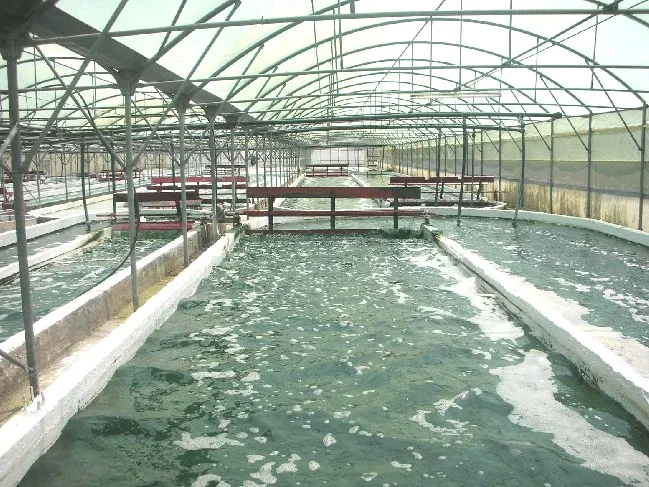As the demand for superfoods continues to rise, Spirulina has emerged as a powerhouse in the health and wellness industry. For entrepreneurs eyeing the potential of Spirulina production, success in scaling the process from small-scale farming to a thriving commercial operation requires strategic planning, adopting best practices, and ensuring sustainability. Here’s your ultimate guide to mass-producing Spirulina, focusing on the key steps for commercial success.
Importance of Planning: Start with a Solid Foundation
Before diving into Spirulina production, having a well-thought-out business plan is crucial. Planning involves identifying the scale of your operation, financial investments, and resources needed. Consider location, climate conditions, and the availability of key inputs such as water and nutrients. Proper planning lays the foundation for your success, helping you avoid unforeseen obstacles and meet market demand.
Regulatory Aspects: Navigating Compliance for Smooth Operations
One of the biggest challenges for new Spirulina producers is managing regulatory aspects. Each country has its own set of regulations for cultivating, harvesting, and selling Spirulina. Whether certifications for organic practices, food safety standards, or environmental regulations, failing to adhere to these rules can result in costly delays or legal issues. To streamline the process, hiring consultants or experts familiar with local regulations is crucial to guide you through the necessary compliance requirements.
Understanding Your Market: Tailoring Your Product to Consumer Needs
Knowing who your target market is and what they are looking for can make or break your Spirulina business. Are you catering to health-conscious consumers, large food manufacturers, or the animal feed industry? Each segment has different needs regarding product quality, packaging, and quantity. Conducting thorough market research allows you to position your product more effectively and precisely to meet demand trends.
Adopting Tested Technology: Modernizing Your Production
In any commercial operation, using outdated methods can slow down your progress. Spirulina production is no exception. By adopting tried-and-tested technology, you can automate processes such as nutrient delivery, water filtration, and even harvesting, leading to higher yields and consistent quality. Modern technologies also help reduce labor costs, making your operation more cost-effective in the long run.
Going for Sustainable Practices: Prioritize the Environment
Sustainability should be at the heart of any Spirulina production operation. By adopting eco-friendly practices like using low-cost, renewable energy sources or recycling water, you can significantly reduce operational costs while minimizing your environmental impact. Sustainable practices will also make your product more appealing to environmentally conscious consumers and businesses, giving you a competitive edge.
Low-Cost Feed: Reducing Input Costs for Higher Margins
One of the critical factors in successful Spirulina farming is managing input costs. Opting for a low-cost but high-quality feed for your Spirulina cultures is essential for achieving high yields without breaking the bank. Many producers are exploring alternative feed options, such as waste streams from other agricultural processes, to lower their costs while maintaining production quality.
Going Organic: Tapping into a Lucrative Market
Organic practices are gaining traction across the globe, and the Spirulina market is no different. By opting for organic production methods, you can cater to a growing consumer base that prioritizes natural, chemical-free products. Though organic practices may increase some costs, the premium pricing that organic Spirulina commands can easily make up for it. Moreover, organic certification can open doors to international markets.
Automation for Reliable Yield and Quality
Automation is your best friend when scaling up production. By automating various parts of the Spirulina farming process, such as nutrient regulation, water quality management, and even harvesting, you can ensure consistent yields and superior product quality. Automation minimizes human error and reduces labor costs, making your entire production line more efficient.
Using Correct Packaging: Ensuring Quality and Shelf Life
Packaging plays a vital role in the commercial success of your Spirulina product. Correct packaging not only preserves the freshness and quality of Spirulina but also extends its shelf life. Make sure to use food-grade, airtight containers to prevent contamination and spoilage. Consider sustainable packaging options to appeal to eco-conscious consumers while maintaining the integrity of your product.
Final Thoughts: Don’t Go It Alone Hire Experts
Mass-producing Spirulina is an intricate process that requires deep technical knowledge and strategic planning. Trying to navigate the complexities without expert guidance can lead to costly mistakes and setbacks. Hiring experienced consultants ensures that you are following industry best practices, complying with regulations, and optimizing your operations for maximum profitability. Spirulina is a promising market, but to unlock its full potential, it is essential to surround yourself with the right knowledge and expertise.
This is where Greenbubble’s turnkey Spirulina Farming Solution comes into play. As a leading consultant in the Spirulina farming industry, Greenbubble offers a complete, hands-on approach to ensure your operation runs smoothly from start to finish. Their turnkey solution covers everything from farm setup, renewable energy integration, and sustainable feeding practices, to regulatory compliance, market strategies, and operational optimization. With their expertise, you can avoid costly mistakes and fast-track your business toward commercial success. By leveraging Greenbubble’s deep industry experience, you can focus on scaling your Spirulina production while they guide you through the intricate processes.
By following these key steps and prioritizing expert advice, especially with the support of consultants like Greenbubble, you’ll be well on your way to achieving commercial success in Spirulina production.


